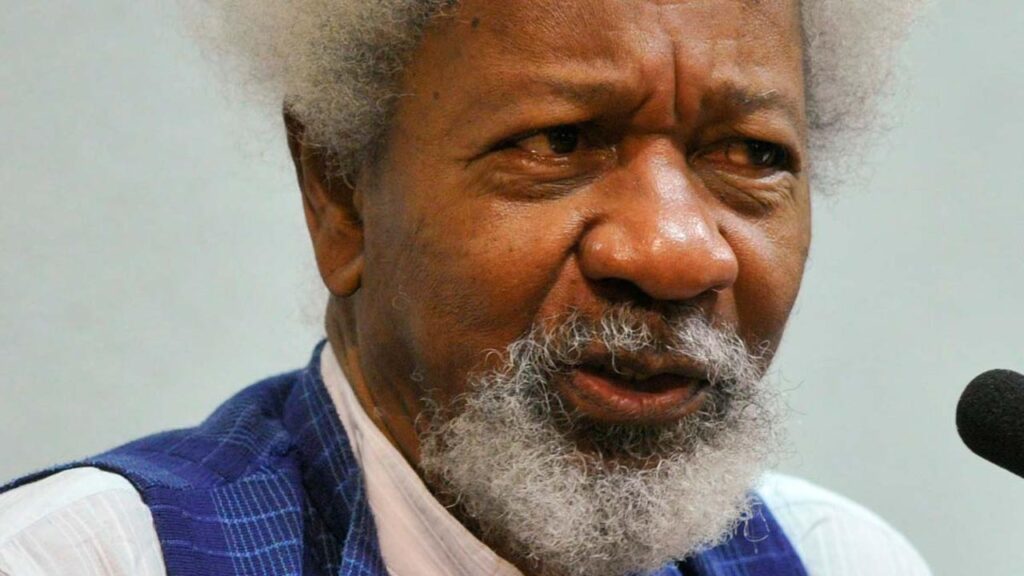
Scientists have in recent studies demonstrated how being active can treat everything from chronic depression to impotence, even as they recommend that doctors prescribe exercise instead of pills for serious illnesses.
According to a report first published by DailyMailUK, the idea that exercise can treat some medical problems as well as (if not better than) medication is gaining momentum.
Earlier this year, a review by the University of Potsdam in Germany hailed exercise as the best treatment for depression, being at least as effective as drugs or talking therapies without the potential side-effects or waiting lists.
The conditions that respond to exercise are wide-ranging. A recent study by Anglia Ruskin University showed that regular physical activity was as beneficial as drugs when it came to treating premature ejaculation, for instance.
This can be added to the list of ailments — from high blood pressure and diabetes to dementia and arthritis — that exercise has been shown to improve.
In the face of such research, the Academy of Medical Colleges in London pronounced physical activity a ‘miracle cure’ for many common ailments. Its 2015 paper concluded exercise would reduce pressure on hospitals if doctors encouraged everyone to do it more.
And one does not need to run marathons to benefit. A 2019 review in the BMJ found that health improves with as little as 30 minutes of physical activity a week — however, more than a quarter of adults currently fail to achieve even this minimum.
Exercise protects against major brain haemorrhage
Regular physical activity and exercise may reduce bleeding in individuals with intracerebral hemorrhage, a University of Gothenburg study shows. The researchers emphasise the importance of physical activity to protect the brain.
The study, published in the journal Stroke and Vascular Neurology, analysed data on 686 people treated for intracerebral hemorrhage at Sahlgrenska University Hospital in Gothenburg during the years 2014 to 2019.
The results are based on a retrospective analysis. Causal connections cannot be identified, but the findings are nonetheless clear: Those who reported regular physical activity had smaller haemorrhages than those who reported being inactive.
Physically active was defined as engaging in at least light physical activity, such as walking, cycling, swimming, gardening, or dancing, for at least four hours weekly.
Everyone who comes to the hospital with a suspected intracerebral haemorrhage undergoes a computerised tomography (CT) scan of the brain. Depending on the severity of the haemorrhage, neurosurgery may be required. However, in most cases, non-surgical methods and medications are used to manage symptoms and promote patient recovery.
Intracerebral haemorrhage is the most dangerous type of stroke and can lead to life-threatening conditions. The risk of severe consequences from the haemorrhage increases with the extent of the bleeding.
 The findings were significant regardless of the location within the cerebrum. Physically active individuals exhibited reduced bleeding in both the deep regions of the brain, which are often associated with high blood pressure, and the surface regions, which are linked to age-related conditions like dementia.
The findings were significant regardless of the location within the cerebrum. Physically active individuals exhibited reduced bleeding in both the deep regions of the brain, which are often associated with high blood pressure, and the surface regions, which are linked to age-related conditions like dementia.
Exercise shown to release protein thereby reducing bowel cancer risk
Experts have identified for the first time exactly how exercise can lower your risk of getting bowel cancer and slow the growth of tumours.
Scientists at Newcastle University have shown that physical activity causes the cancer-fighting protein, interleukin-6 (IL-6), to be released into the bloodstream which helps repair the DNA of damaged cells.
The findings, published in the International Journal of Cancer, shed new light on the importance of moderate activity in the fight against the life-threatening illness and could help develop treatments in the future.
In the small-scale study, which is a proof of principle, the team from Newcastle and York St John universities recruited 16 men aged 50-80, all of whom had lifestyle risk factors for bowel cancer, such as being overweight or obese and not physically active.
After providing an initial blood sample, the participants cycled on indoor bikes for a total of 30-minutes at a moderate intensity and a second blood sample was taken as soon as they finished pedalling.
As a control measure, on a separate day, scientists took further blood samples before and after the participants had rested. Tests were carried out to see if exercise altered the concentration of cancer-fighting proteins in the blood compared to resting samples and it was found that there was an increase in IL-6 protein.
Scientists added the blood samples to bowel cancer cells in a lab and monitored cell growth over 48 hours. They identified that blood samples collected straight after exercise slowed the growth of the cancer cells compared with those collected at rest.
Furthermore, as well as reducing cancer growth, the exercise blood samples reduced the extent of DNA damage, suggesting that physical activity can repair cells to create a genetically stable cell type.
It is estimated that physical activity reduces the risk by approximately 20 per cent. It can be done by going to the gym, playing sports or through active travel such as walking or biking to work, but also as part of household tasks or work like gardening or cleaning.
Physical activity crucial for poststroke recovery
After a stroke, physical activity can be pivotal to successful recovery. People who spend four hours a week exercising after their stroke achieve better functional recovery within six months than those who do not, a University of Gothenburg study shows.
The study, now published in the scientific journal JAMA Network Open, is based on data concerning 1,500 stroke patients in 35 Swedish hospitals. The participants were grouped according to their poststroke patterns of physical activity.
The results show that increased or maintained physical activity, with four hours’ exercise weekly, doubled the patients’ chances of recovering well by six months after a stroke. Men and people with normal cognition kept up an active life relatively more often, with better recovery as a result.
The researchers have previously succeeded in demonstrating a clear inverse association between physical activity and the severity of stroke symptoms at the actual onset of the condition. These new findings highlight the importance of maintaining a healthy, active lifestyle after a stroke.

How exercise can boost brain health
New research shows how exercise promotes neuronal activity in the hippocampus. The hippocampus is an area of the brain that is involved with the storage of long-term memory.
The study’s findings suggest that chemical signals from contracting muscles may trigger a signaling pathway that boosts brain function and may help treat neurological disorders in the future.
The next steps for research involve important clinical questions such as the types of exercise that are most effective – aerobic versus anaerobic – and how much and for how long.
Growing evidence supports the idea that exercise is beneficial for both the body and mind.
According to a new study published in the journal Neuroscience, the relationship between physical activity and brain health may be even more closely linked.
Researchers examined how the chemical signals produced by muscles during movement lead to neuronal development in the brain. More specifically, they looked at how exercise affects the hippocampus.
The hippocampus is the part of the brain that is involved with the storage of long-term memory.
This study highlights the critical role of astrocytes, specialised cells that surround and support neurons in the brain, in regulating the development of hippocampal neuronal networks.
By highlighting the critical role of astrocytes in regulating the activity of neurons, which are often overlooked in brain research, the study suggests that developing new treatments for neurological disorders may require considering not only neurons but also astrocytes.
In at least one 2022 study published in Translational Psychiatry, researchers found that “abnormally elevated neuronal activity” is a common feature of Alzheimer’s disease and appears to be associated with greater cognitive decline.
The study’s results support the growing body of evidence that exercise is not only beneficial for physical health but also for cognitive health.
Specifically, the results suggest that chemical signals from contracting muscles may trigger a signaling pathway that enhances cognitive function and may have therapeutic potential for treating neurological disorders.
The results of this study suggest that chemical signals from contracting muscles may trigger a signaling pathway that improves brain function and could potentially be beneficial for treating neurological health conditions.
In terms of the next steps, it is recommended to look at the types of exercise that are most effective – aerobic versus anaerobic – examining frequency and duration.
Regular exercise may boost recovery for people with substance use disorders
Common treatment approaches for substance use disorders include therapy and medication.
A new meta-analysis revealed that regular exercise could be another management technique to incorporate into treatment plans.
A large number of participants who engaged in exercise reduced or stopped their substance use. More research is required into how — and to what extent — exercise may help those with substance use disorders.
In the past year, 46.3 million Americans over the age of 12 met the DSM-5 criteria for having a substance use disorder (SUD).
SUDs can involve both legal and illicit substances, ranging from alcohol and marijuana to opioids and cocaine.
Treatments for SUDs vary — with outpatient and inpatient programmes offering approaches such as ‘detoxing’, cognitive behavioral therapy (CBT), and medications.
However, a new meta-analysis published in the journal PLOS One has revealed the benefits of another therapeutic measure: physical exercise.
Researchers at Université de Montréal in Canada wanted to explore the impacts of exercise on those with SUDs after recognising the potential benefits of this intervention.
A potential reason that participants’ substance use decreased after exercise is that the intervention reduced their depression levels — and the association between SUD and depression is stronger than you might expect.
Serotonin is known as the brain’s ‘happy chemical’, while dopamine is a chemical messenger linked to feelings of pleasure.
The researchers also noted that sleep improved among participants who engaged in physical activity — and “studies have shown that poor sleep leads to poor mental health.”
For instance, a study of postpartum women found that poor sleep led to ‘significantly higher’ depression scores, while a study of farmers who experienced poor sleep obtained similar results.
Experts believe exercise aids in alleviating symptoms of depression through various mechanisms.

High blood pressure
Exercise was found to be as good as drugs at cutting high blood pressure in a study published in the British Journal of Sports Medicine in 2018.
There are two mechanisms at play, explains Professor Ian Swaine, a sport and exercise scientist at the University of Greenwich.
“First, by causing gentle, repeated challenges to the cardiovascular system, exercise encourages the blood-pumping network to adapt and strengthen, so it copes better under stress — maintaining lower pressure even in moments of high anxiety.
“Second, exercise helps increase ‘good’ cholesterol in the blood — which counters ‘bad’ cholesterol, which would form plaque on artery walls and could increase blood pressure.”
Depression
An analysis in the British Journal of Sports Medicine last month found moderate exercise (150 minutes per week) was as effective as antidepressants for treating mild to moderate depression. Another new study in the Journal of Affective Disorders found antidepressants and running equally effective for moderate depression. The authors said exercise should be considered a standard treatment option. It’s thought exercise leads to the release of endorphins, hormones that improve mood.
Type 2 diabetes
In a 2017 Copenhagen University study, more than half of adults were able to stop taking their type 2 diabetes medication within a year of starting 30 minutes of aerobic exercise five times a week.
The theory is that regular exercise increases the sensitivity of cells to insulin, the hormone that controls blood sugar levels.
Impotence
A review of existing studies in the British Journal of Sports Medicine in 2016 found that regular exercise improved erectile function similar to that seen with medication such as Viagra. Professor Swaine said: “We know exercise can redistribute blood flow around the body, so it’s possible it could send more blood to the genitals and boost erectile function.”
Osteoarthritis
Studies show the effect of training on arthritic knee and hip joints is comparable to non-steroidal anti-inflammatory drugs. Exercise builds stronger muscles, which better support sore joints. There’s also evidence it triggers the release of myokines that reduce the inflammatory response in osteoarthritis.
Doctors have long known that people who move more tend to be slimmer, have better mental health and a lower risk of chronic illnesses — and live longer. New data is revealing what exercise does at a cellular level — and exactly what makes the effects so powerful and wide-reaching.
“Research has shown the exertion of exercise places a small but positive stress on our body’s systems, which forces the cells to adapt in order to cope with the demands being put on them,” explained Professor Ian Swaine, a sport and exercise scientist at the University of Greenwich. “This has the net result of making them work better and harder across every organ, meaning the entire body functions more efficiently.”
In other words, repeated exercise keeps all the body’s cells in optimal condition so they can cope better with life’s everyday challenges. Yet there are specific areas of the body that can benefit, including the heart and, less obviously, the brain. “Activity streamlines the ‘plumbing’ of the cardiovascular system, by making blood vessels stronger, more flexible and better able to pump blood around the body, which reduces strain on the heart and lowers blood pressure,” said Swaine.













